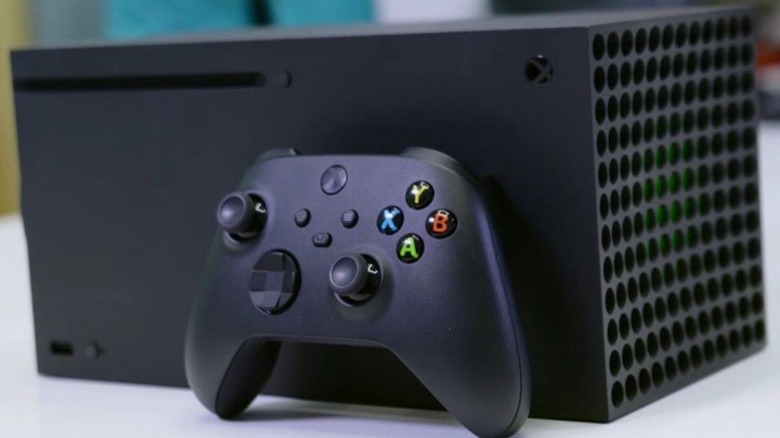New Testing Puts One Xbox Rumor To Bed
Critics have finally been able to review the Xbox Series X within the past couple of weeks. While overall reactions have been positive, one major Series X problem seems to have arisen: some people have reported that the Series X runs way too hot. This has been a cause for concern among fans, but a recent test of the new console may have put that fear to bed.
German website Tweakers (translation via Tom's Guide) decided to run the Xbox Series X through several different tests to see how it performed under different circumstances. A few of these tests compared the performance of the Series X to that of Xbox's current top of the line console, the Xbox One X. The results were a little bit surprising, particularly for anyone who has been following the rumors surrounding the Series X's significant heat output.
A few of Tweakers' tests naturally involved running games on the Xbox Series X. In many previous reviews of the Xbox Series X, journalists have taken to testing Xbox One X games on the new console in order to compare the performance of both systems. However, by running Xbox One X games on the Series X, these tests were able to prove that Microsoft's new console has a leg up on the One X in a few major areas.
For instance, the Series X actually used up a good deal less power than the Xbox One X. The difference was noticeable right from the very start. Even the dashboard soaked up slightly more power on the One X. Simply sitting on the main menu screen used 52W (watts) of power on the One X, as opposed to 50W on the Series X. That's not a huge difference, but the next test showed an even greater gulf in performance.
Most tellingly, actively playing a game (presumably a One X title) on the Series X only used 128W of power, while the One X used 180W. After playtime was over, putting the Xbox Series X into sleep mode consumed much less energy than the One X's sleep mode. While the One X used 43W, the Series X used only 28W. In other words, it seems like the Series X eats up less power across the board.
This lower wattage also meant that the Series X didn't get nearly as hot as the One X, at least during Tweakers' significant testing times. According to Tweakers, the heat being vented from the Series X topped out at 48 degrees Celsius (or 118.4 degrees Fahrenheit), while the Xbox One X got up to around 65 degrees Celsius (or 149 degrees Fahrenheit).
Tweakers' findings seem to have been backed up by a similar test run by Windows Central, which used a thermal imaging camera to get a clearer look at the temperatures reached by the Series X. Windows Central ran Monster Hunter World on the Series X in resolution mode, which pushes the graphics of the game to their absolute limits. Despite the power on display, Windows Central saw an even better result than Tweakers, with the Series X not getting any warmer than 35 degrees Celsius (or 95 degrees Fahrenheit). Windows Central did note that the outside temperature in the UK (where the test was run) is significantly lower than in some parts of the world, but the findings were still considered relatively accurate.
These tests from Tweakers and Windows Central seem to dispel those reports that the Series X ran significantly hotter than the One X, which should come as a relief for many fans. However, these tests don't completely clear the air in regards to the new external SSD for these consoles. While the craftsmanship involved in the 1TB Seagate external memory card apparently justifies its hefty $220 price point, it is reportedly hot to the touch.
A recent teardown of the memory card from VentureBeat's Jeff Grubb revealed that Microsoft and Seagate have gone the extra mile to mitigate the heat as much as possible. The fact remains that the memory card may end up being the one component of the next-gen Xbox experience that is uncomfortably warm. At least the console itself isn't quite as hot as previously reported.
So there you have it: while there is certainly a good bit of heat generated by the Xbox Series X, it apparently doesn't approach the same level as the Xbox One X. Still, these are tests that are being run in controlled environments, and not the living rooms of regular fans. It should also be interesting to see if the results are any different when playing titles designed for the Xbox Series X for lengthier periods of time. Only prolonged use will tell fans what to expect from the Series X.

